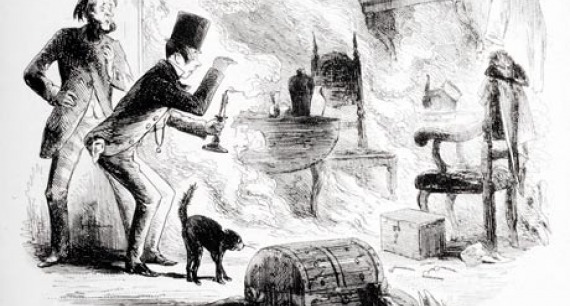The list (see below) is part of this rather fascinating Lapham's Quarterly article on alcohol-induced spontaneous Human Combustion (wiki) ("SHC"). The article includes accounts of some of the 18th century reports of SHC as well as more details on the relationship between these reports and the Temperance movement.
By 1799, there were enough cases on record for one physician, Pierre Lair, to identify some patterns and recurring characteristics of victims of spontaneous human combustion:
1. Victims were older, usually over 60.
2. Victims were overweight.
3. Victims led inactive lives.
5. Women were more prone to spontaneously combust than men.
6. At the scene there was often an external flame, such as a candle or fireplace.
7. Combustion was extremely rapid.
8. The flames were difficult to extinguish.
10. The surrounding room was coated with a thick, yellow, greasy film.
11. The first usually consumed the trunk of the body, but left the head and extremities intact.
12. Accidents occurred during fair weather, and more often in winter than in summer.
Lair also ranked various spirits in terms of their likely contribution to Spontaneous Combustion: gin, followed by brandy, whiskey, and finally, rum.
Lair also ranked various spirits in terms of their likely contribution to Spontaneous Combustion: gin, followed by brandy, whiskey, and finally, rum.
It's interesting to compare this list to more recent attempts to determine whether the phenomenon is real or possible: A Cambridge professor has tackled the issue of spontaneous combustion – using belly pork.
Prof Brian J Ford is a research biologist and author of more than 30 books, most about cell biology and microscopy but he has turned his attention to the mechanisms behind why people ‘explode’.
He said in an article in New Scientist (behind subscription firewall): “One minute they may be relaxing in a chair, the next they erupt into a fireball.
“Jets of blue fire shoot from their bodies like flames from a blowtorch, and within half an hour they are reduced to a pile of ash.
“Typically, the legs remain unscathed sticking out grotesquely from the smoking cinders. Nearby objects – a pile of newspapers on the armrest, for example – are untouched.”
Prof Ford wanted to disprove the alcoholism theory and also something called the ‘wick effect’ suggested by London coroner Gavin Thurston in 1961.
Thurston had described how human fat burns at about 250c, but if melted it will combust on a wick – such as clothes or other material – at room temperatures:
“Even when cloaked in gauze moistened with alcohol, it would not burn.
“Alcohol is not normally present in our tissues, but there is one flammable constituent in the body that can greatly increase in concentration.”
The body creates acetone, which is highly flammable. He added:
“A range of conditions can produce ketosis, in which acetone is formed, including alcoholism, fat-free dieting, diabetes and even teething.
“So we marinated pork tissue in acetone, rather than ethanol.
“This was used to make scale models of humans, which we clothed and set alight.
“They burned to ash within half an hour.
“For the first time a feasible cause of human combustion has been experimentally demonstrated.”
More:
Further reading on the wick effect and on SHC.
io9 has an article from 2011: 10 Cases of Spontaneous Human Combustion




No comments:
Post a Comment